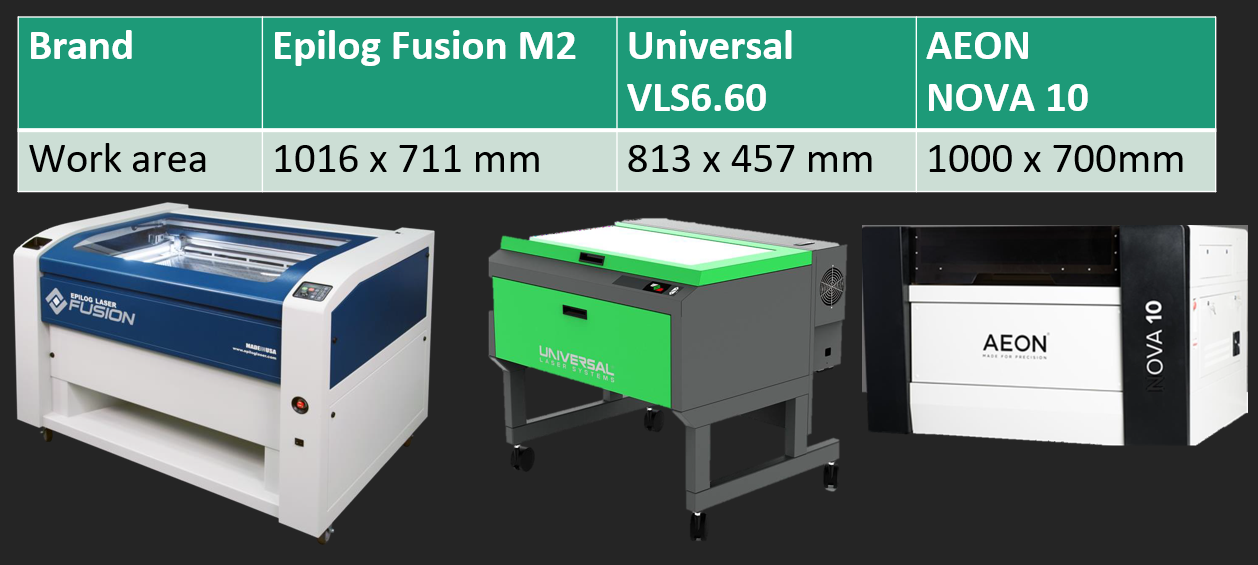Computer Controlled Cutting
Laser
Laser is an acroynm for "Light Amplification by Stimulated Emission of Radiation."
What is laser cutting?
Laser cutting is a technology that uses a laser to slice/cut materials. It works by having the focused laser beam directed at material which either melts, burns or vaporizes away through the optics.
Types of Laser Cutting Mechanism
- •Burning
- •Melting
- •Evaporation
- •Ablation (Subtractive process- removal of material from a raw substrate block)
Gain Medium
A medium which is use to amplify the power of light in laser to compensate for the resonator losses
Types of Lasers (Gain Medium)
- • CO2 (10.6 u)
- • Fiber (1-2 u)
- • InGaAsP (1-2 u)
- • Nd:YAG (1064, 532 nm)
- • Ti:sapphire (650-1100 nm)
- • Excimer (100-300 nm)
*Note*
To ensure safe laser cutter operation,
make sure to have the correct airflow settings (air assist, exhaust, filter).
Laserable/Prohibited Materials for laser cutting
Laserable materials
- 1. Cardboard
- 2. Wood
- 3. Acrylic
- 4. Delrin
- 5. Fabric
- 6. Ceramic
- 7. Glass
Prohibited materials(Catch fire when laser cutting)
- 1. PVC
- 2. Pleather
- 3. Moleskin
- 4. Polycarbonate/Lexan
- 5. HDPE
- 6. Polystyrene foam
- 7. Fiberglass
- 8. Carbon fiber
- 9. Butane/Gas
Laser settings
Power
- • Higher burns deeper
- • Too much or too little sacrifices detail
Speed
- • Higher saves time, burns shallower
- • Too high or low speeds reduces detail
Frequency (PPI)
- • # pulses per inch of travel
- • Higher increase burning/melting effect
- • Acrylic: 500 ~ 1000
- • Wood: 100 ~ 500
Rule of Thumb:
- • Doubling power doubles depth of cut
- • Halving speed doubles depth of cut